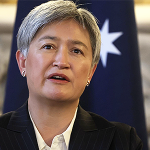Israelis awoke today to the unsurprising news that the IDF had crossed the border into Lebanon. The incursions, which had been expected for days and heavily briefed as imminent yesterday, are supposedly ‘limited’ and ‘targeted’ – aiming to destroy fortified Hezbollah positions overlooking the Galilee and prevent the terror group from using short-range weapons like RPGs against Israeli towns.
The IDF has learnt its lessons from the shame and failure of the 2006 war, while Hezbollah was overconfident after its successes
The invasion came after two weeks of astonishing successes in the war against Hezbollah. First, the detonations of thousands of supposedly secure pagers worn by Hezbollah commandos, secretly laced with explosives, then a repeat wave of explosions of walkie-talkies, the backup communications system, and then two weeks of intense bombing against weapons dumps and rocket caches all over Lebanon. At the same time, the IDF and Israeli intelligence systematically wiped out the leadership of Hezbollah in Beirut with targeted airstrikes that showed just how deeply the group must have been penetrated.
Those strikes culminated in the bombing of a bunker in the Dahieh district of Beirut on Friday night where the leader of Hezbollah, Hassan Nasrallah, was holding a meeting with his remaining senior staff.
The bunker-busting deep penetrating bombs killed Nasrallah, who had led Hezbollah for 32 years and built it from a Lebanese terror militia into a regional military power and Iran’s most reliable asset. When Bashar Assad’s rule was threatened by the Arab Spring, it was Hezbollah that won the most critical battles, massacring Syrian Sunnis in the service of Iran and Assad. Many Israelis rejoiced at the end of Nasrallah, and they were joined by Sunni Muslims from around the Middle East.
With Hezbollah’s leadership erased, its weapons being eliminated and its communication in disarray, Israeli political and military leaders decided that now was the time to put boots on the ground in Lebanon.
This is Israel’s fourth major incursion into Lebanon to ‘bring calm to the residents of northern Israel’. The first, in 1978, was in response to the Coastal Road massacre, when PLO terrorists crossed from Lebanon and hijacked a bus, killing 38 Israeli civilians including 13 children. That incursion ended with an Israeli withdrawal after pressure from the UN.
A much bigger invasion happened in 1982, where Israel tried to take on the PLO and other Palestinian groups that had set up their operations in southern Lebanon. The IDF besieged Beirut itself until the PLO agreed to move to Tunis. Israel slowly withdrew from most of the country but kept control of a buffer zone up to the Litani river, working with the South Lebanese army, a local Christian militia, to keep control.
It was this occupation that the young Hezbollah group focused on, attacking Israeli troops, firing Katyusha rockets into Israel despite the buffer zone. Eventually in 2000 Israel left Lebanon, taking many of its South Lebanese army allies with it as refugees.
Hezbollah crept south, the rockets began again and after a cross-border raid by Hezbollah took Israeli hostages in 2006, Israel once again launched a war into Lebanon.
The 2006 war is Israel’s cautionary tale. The war caused massive destruction to Lebanese civilian infrastructure. Israel pounded Dahieh, Hezbollah’s Beirut stronghold, with enormous bombs, but killed no Hezbollah leaders. Dozens of IDF soldiers were killed, but Hezbollah’s losses remained moderate. When Israel was forced into a withdrawal by international pressure and domestic embarrassment, there was a ceasefire and a UN resolution but few victories on the ground.
The IDF has learnt its lessons from the shame and failure of the 2006 war, while Hezbollah was overconfident after its successes. The 2024 war against Hezbollah is already an order of magnitude more successful than 2006, on the day ground troops go in.
All of this, though, doesn’t mean Israel is close to achieving its stated war aim of ‘returning the residents of northern Israel to their homes in peace.’ Sirens sound every hour in northern Israel as rocket barrages target the Galilee, forcing residents to run for shelters. The long-time evacuees who left northern Israel months ago are being joined by new families fleeing the Haifa and Safed areas.
Once the invasion is in full swing and the Hezbollah outposts on the border are destroyed, then what? Some Israeli leaders talk about fully disarming Hezbollah, an unrealistic pipe dream. Only the most extreme far-right politicians hope for an ongoing Israeli occupation like in the 80s and 90s, and this time with no South Lebanese army to help. So what will stop Hezbollah from shooting rockets and bring those northern residents home?
After October 7, 2023, prime minister Benjamin Netanyahu promised the Israeli public ‘total victory’ against Hamas. A year later, Hamas in Gaza is destroyed as a military force, many of its leaders are dead, Gaza is in ruins and more than a million Gazans are displaced. However, Hamas is still holding some 100 Israeli hostages or their bodies, and it is still the government of Gaza. There is little actual combat happening in Gaza today. The war is effectively over. But nobody would call that a ‘total victory’.
Israel has had tremendous, unimaginable successes against Hezbollah in just a fortnight of intense operations. But the sort of total victory that Netanyahu has promised the Israeli public may be a mirage. As the IDF moves into the next phase, Israelis should be asking their leaders how they expect to win the war, not with fantasies of dismantling Hezbollah through force of arms alone, or with yet another ongoing occupation, but with a realistic plan that allows the residents of northern Israel to live in peace.








